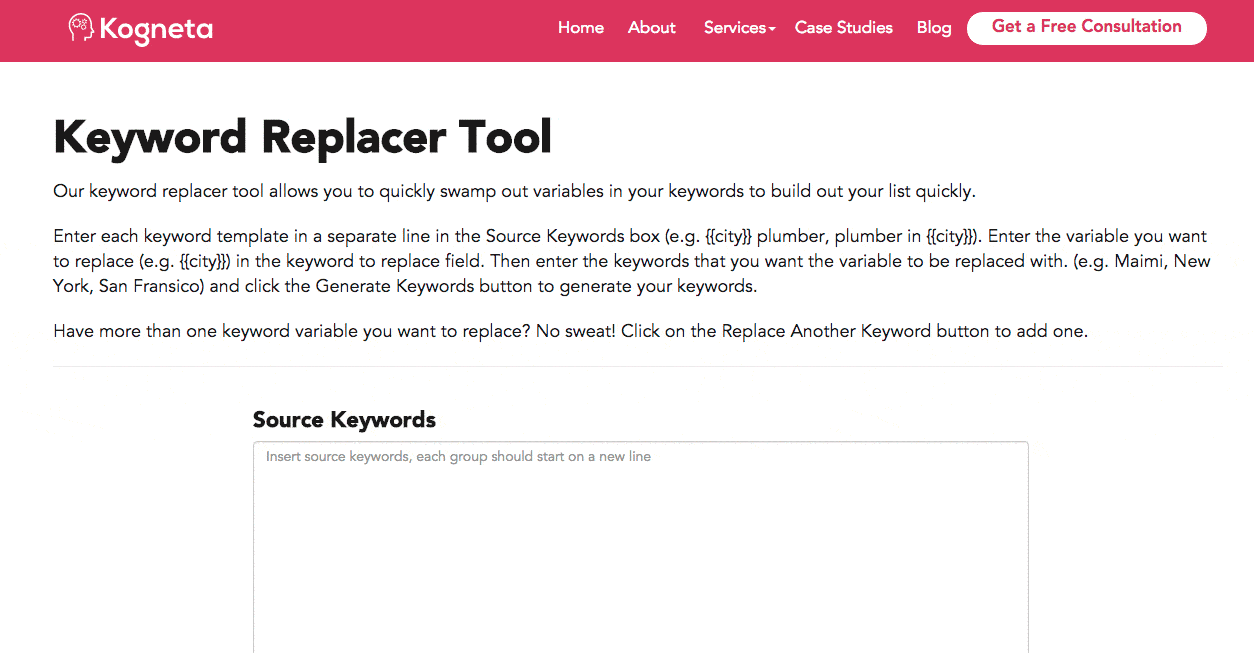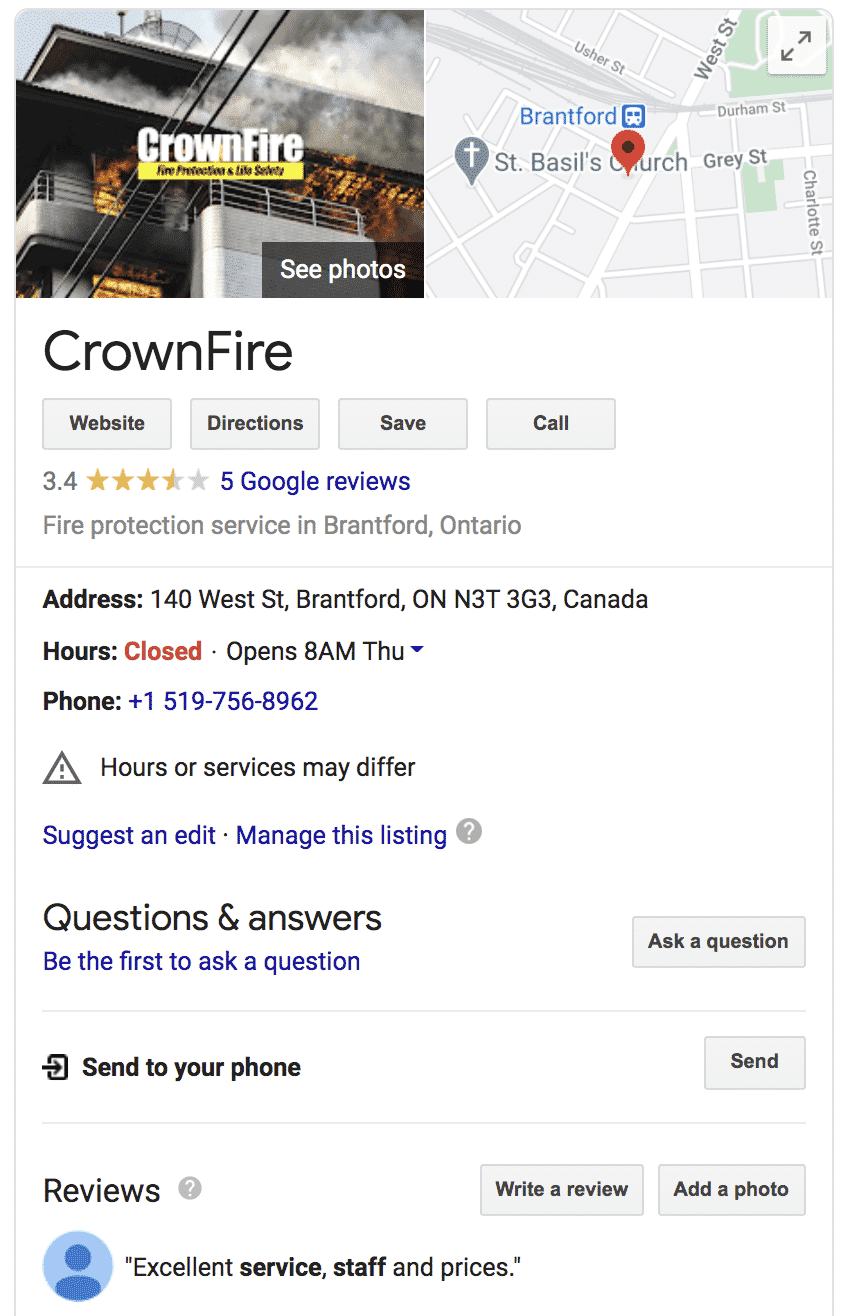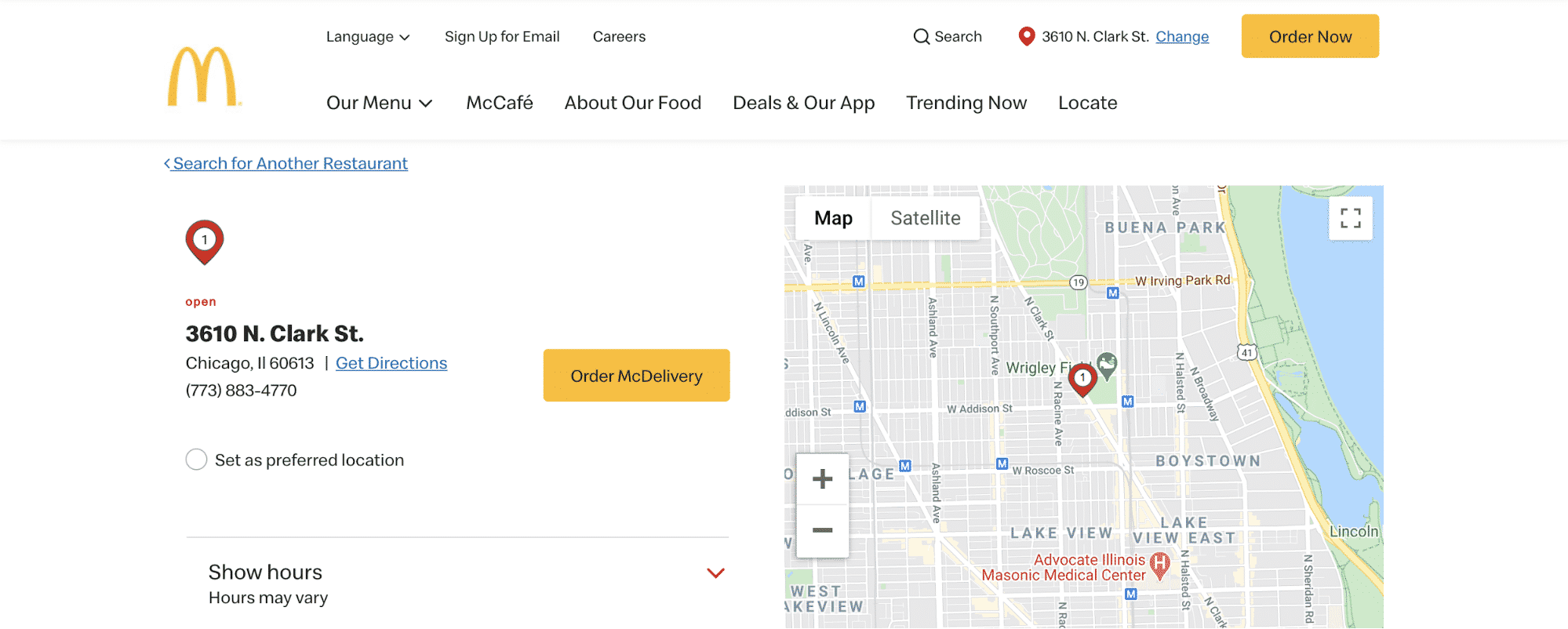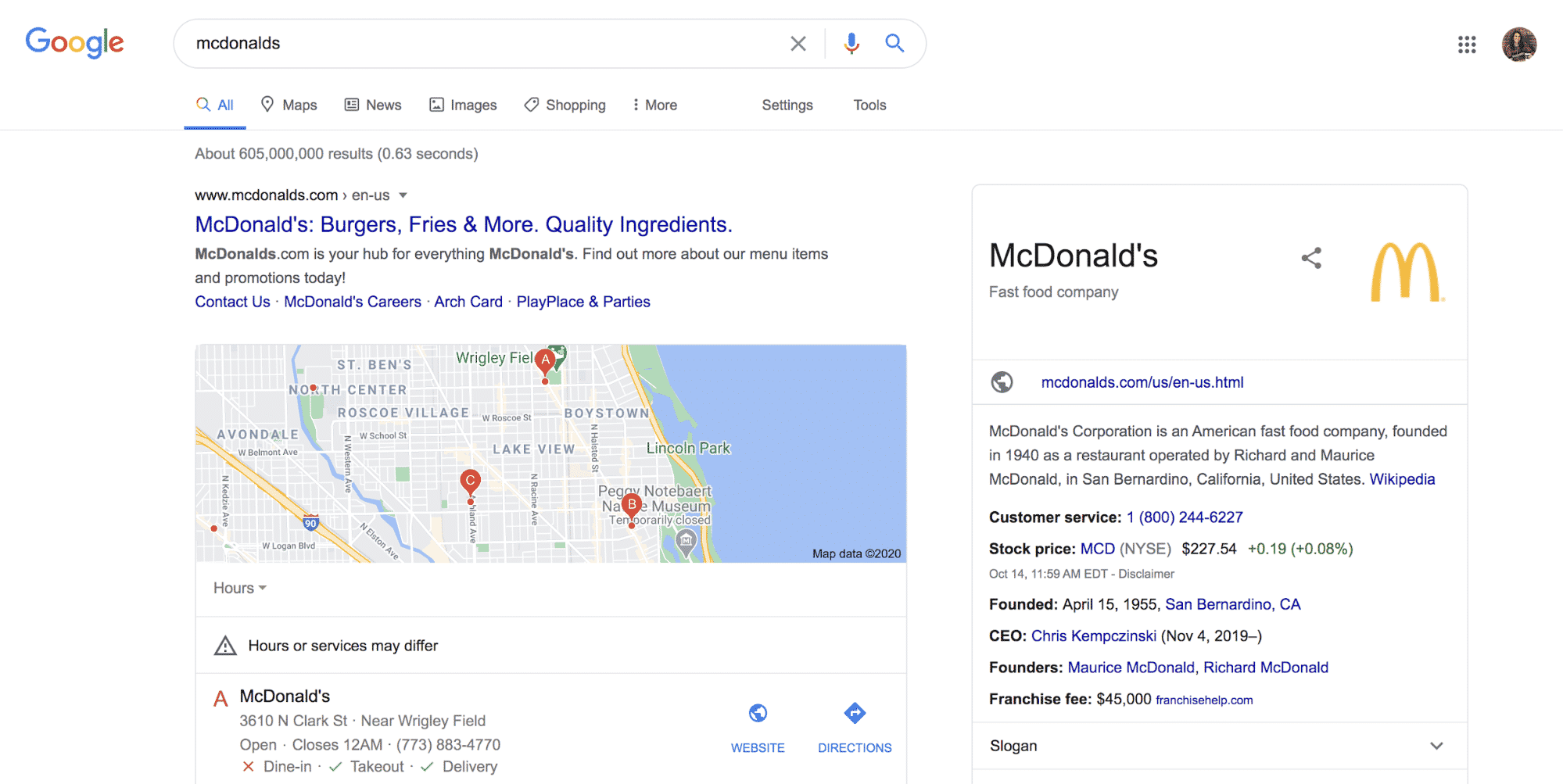How to Grow with National SEO
Read our comprehensive guide on how to leverage Google and SEO on a national level profitably and predictably without the B.S.
Download: National SEO Guide
Looking to dominate Google on a national level but, not sure how to do it profitably? Discover our comprehensive guide on how to crush your national SEO campaign profitably and predictably. Download it now.
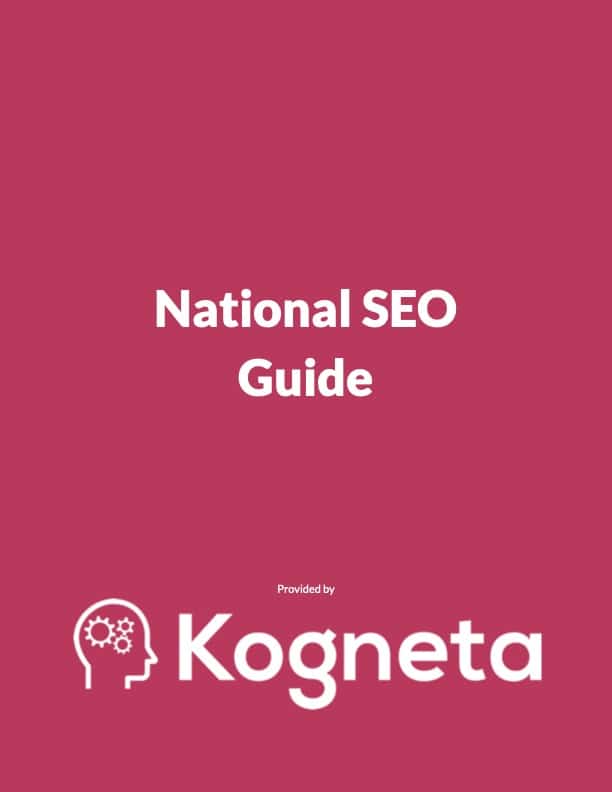
This guide includes:
- What national SEO is
- How national SEO and local SEO are different
- Step-by-step instructions on how to get started with national SEO
- Common questions and roadblocks for national SEO
How to Do National SEO
Marketers far and wide can acknowledge the importance of search engine optimization, or SEO. The SEO process helps your website and other online content rank as high as possible on Google — an important investment given how naturally and frequently searchers click on the first few results.
Basically, the better your content ranks, the more traffic (and customers) you’re likely to get.
When it comes to physical retail or service businesses, a lot of SEO boils down to location-specific terms and tactics. So, what does it mean for a company like yours that is nationally based? Are you forced to choose a single geographic location to target?
Thankfully, no — this is where national SEO comes into play.
What is national SEO?
National SEO is the systematic process of optimizing a website around search engine factors in order to improve its local rankings across a broad geographic region rather than a single geographic location or no geographic location at all.
Some experts say that national SEO is simply local SEO at scale, but it’s not quite that simple.
Local SEO vs. National SEO
Both local SEO and national SEO play important roles in how your website is discovered online. Let’s break down some key differences between the two.
Target Location(s)
The first difference is in what location(s) you’re targeting — the intent of your SEO. As we defined above, national SEO optimizes for a broad geographic region. On the other hand, local SEO is the process of optimizing and structuring your website to rank within a single geographic location.
SEO Site Structure
The second difference is in how you structure your website. Let’s say you’re trying to optimize your website to rank in Chicago. In this case, your site structure would be much different than a company that’s, say, trying to rank its website and business locations in multiple cities, states, or even countries.
Where a local website would have the typical website structure with a few service pages, a national website would have subdirectories and subpages targeting locales within broader regions, states, or countries.
For example, the structure of a national SEO website targeting various Canadian territories may have a URL ending in .com/ontario/toronto/yorkville. This subdirectory would then change for each neighborhood, city, and territory in which that business has a location.
Keyword Research
The third difference is how you conduct keyword research. For local SEO, you’d conduct keyword research for a single location. Scaling this process out across various geographies, however, can get complicated.
To do keyword research on a national SEO level, you have work with keyword templates to identify keywords. An example keyword template is {{city name}} + {{service}}.
Kogneta developed its Keyword Replacer tool to help you apply these templates to multiple locales.
Let’s say you want to duplicate the template above across multiple locations for a handful of plumbing services. First, you’d insert your list of keyword templates into Source Keywords. In the Replacement Keywords section, enter the placeholder (e.g. {{city}}) into Replace and the list of cities you want to input in With. Then click on the Generate Keywords button.
The Keyword Replacer tool takes all of the instances of {{city}} in your keyword templates and replaces them with the cities in the With box.
Link Building
The fourth major difference is in your link building process. It’s much easier to build links for local SEO. When your business and website is based in a single geographic location, it’s easier to build and cultivate those reciprocal relationships. Obviously, you must ensure each and every link is contextually relevant, but this is much simpler for local SEO.
On the other hand, national SEO requires you to expand your link building campaigns across multiple regions. You need to source links and build relationships with all kinds of different people located across the state, country, or globe.
The biggest difference between local SEO and national SEO is doing things at scale in a repeatable and profitable manner.
How to Do National SEO
If you’re a multi-location business and you’re curious about how to do national SEO for your own website, you’ve come to the right place. In this section, we’ll walk through how to develop national SEO strategies that help customers discover your business no matter where you’re located.
1. Develop a national SEO plan.
Before you start executing on national SEO, stop and make a plan. Without a strong foundation, your SEO efforts will likely fizzle out over time or move in the wrong direction and ultimately hurt your traffic and business.
When developing a plan for your national SEO, ask yourself (and your team) the following:
Who are the stakeholders?
Are you a corporate office, or do you have franchisees? (Franchisees are stakeholders, too!) Basically, who are you trying to please and who are you responsible to?
What are your business objectives?
Are you trying to drive sales? Brand awareness? Are you pushing a specific product or service in specific geographic areas? How will national SEO help you grow your business?
Which geographies you want to rank for?
Are you located in all states or provinces? Only a few? Out of all your locations, which ones should be prioritized over others — and why?
What are your priorities?
Lastly, what are your priorities — across regions and across your product and/or service lines?
To properly execute a successful SEO plan, you should understand the core objectives for your campaign as these will dictate your direction, your strategy, and your tactics.
2. Conduct keyword research.
It’s difficult to decide what to write about — for one location much less multiple. Every business struggles with this. The best way to combat this is? Before you even begin writing, spend time researching potential topics and keywords.
Whether you know it or not, you’re likely sitting on a gold mine of keyword resources — Google Search Console, Google Analytics, Google My Business (which we’ll discuss later), and your search term reports from Google Ads. These tools present keyword opportunities based on how your website is performing and what terms people are searching to find it.
Another powerful keyword research method is simply browsing your competitors’ websites. What topics are they discussing? What keywords are they featuring on their blog? What are their best articles and posts? This should give you an idea of what’s being written about and searched in your industry.
Lastly, list all of your products or services and their relevant features, benefits, and other related concepts. These can be considered “high-intent” keywords as people are likely searching them because they’re interested in purchasing products or services like yours.
After gathering a large list of keywords from these sources, run that list through keyword research tools like Ahrefs, Moz, and SEMRush. This process will help identify additional opportunities and find additional data around each term (such as search volume and keyword difficulty).
These tools can also help you analyze your website and your competitors’ to identify even more keywords and search terms. (See? It’s not too hard to figure out what to write about.)
Read this blog post for an in-depth explanation of national SEO keyword research.
Once you have your keywords listed, map the terms out to identify which pages should be targeting which keywords (depending on the objectives you set in your plan), plus details such as H1s and URL structure. This will guide how you’ll go about creating and optimizing your pages.
3. Develop your website architecture.
Now, let’s get into the nitty gritty of national SEO — your site structure. The answers to the following questions will dictate how you structure your website and build out pages for the keywords you identified — not to mention what kind of user experience you provide for your customers.
First, how is your website going to be structured? Do you have location pages, or do you have microsites for each location? Read this blog post to dive deeper into SEO site structure strategy for multiple locations.
Next, are you a service area business that sends employees to the customer, or are you a physical business with multiple locations (such as shops or restaurants)? Do you have franchisees? If so, how closely are they located and how do you divvy up territories or service areas?
Lastly, where do you operate? On the state-level? Across cities or territories? Or do you have multiple locations within the same city or county? This will dictate how you structure your website and, ultimately, how granular you get with your national SEO strategy.
4. Optimize your Google My Business profile.
With your site architecture and structure laid out, it’s time to optimize your Google My Business (GMB). Did you know that 60.9% of shoppers use Google to find local businesses? And they do so through Google My Business.
GMB is a resource that allows you to directly submit your business information to Google so it shows up in Google search results. It’s also important because it allows you to appear in map packs.
Here’s an example of a real Kogneta customer, CrownFire. Their GMB profile shows up like this:
When I search for the type of service they provide, they also pop up in the Google Map pack (as the first result, no less):
Want to see your business featured on Google Maps or in a Google My Business profile? The first step is to figure out if you’re eligible for GMB. If you have physical locations, you’re definitely eligible. If you’re a service-based business registered in multiple states, you may also be eligible.
Visit Google My Business to register, if you haven’t already. Once you’ve done that, it’s time to optimize your GMB profile. Let’s walk through the components.
Business Name
Your business name on GMB should reflect your legitimate, legal business name. Avoid stuffing the name with keywords or spammy text.
Phone Number(s)
GMB allows you to input multiple numbers for multiple locations. To track attribution and understand how your customers are finding your business, we always encourage you to use a call tracking number. On your GMB profile, you can designate the first phone number as your tracking number and the second number as the phone number for each specific location.
Categories
Fill out as many categories as are applicable to your business and each location.
URL
This should always reflect a main URL that leads to a landing page or subdirectory for each specific location. For example, McDonald’s has countless locations, and if I were to search for a local franchise on Google, the GMB profile would provide a nearby McDonald’s URL that’s most relevant to where I’m located.
Depending on your business and industry, you can also input an appointment or menu URL. Whatever type of URL you provide here, be sure it provides the best and most seamless experience for your site visitors and customers. Also, always include UTM parameters as this allows you to understand how your GMB profile affects traffic to your website.
Address
Be sure your address is accurate, especially if customers actively visit your business locations. If you are a service-based business that sends technicians or employees to customer locations, you can choose to withhold your address and provide service areas instead.
Media/Photos
GMB generates media from owner uploads and user reviews — both are equally important in attracting and converting new customers. Be sure you’re constantly uploading new photos and videos to your profile. The more populated it is, the more engagement you’ll receive, and the higher your profile will rank among competitors.
Posts
You can share posts on your GMB profile, albeit they expire after seven days. Posts are an opportunity to connect with your audience and encourage them to click on your website to book a meeting, make a purchase, or visit your physical location.
FAQs
FAQs are a new feature that allows visitors to ask questions that can be answered by you or other visitors. It’s wise to routinely read through any FAQs and be sure all are answered and up-to-date. This channel also provides a window into any pressing questions or concerns your customers may have that you may not otherwise be aware of.
Reviews
We don’t have to tell you how important online reviews are — according to a GatherUp statistic roundup, 66% of Americans would trust an anonymous, online review more than they’d trust a recommendation from an ex-boyfriend or ex-girlfriend. Moreover, a mere 0.2 increase in ratings on GMB can lead to conversion growth of 120%!
But reviews aren’t only important to consumers; they’re also critical to your business’s success on Google itself. Reviews account for 15.44% of how Google ranks a local business.
Encourage your customers to leave reviews as they may lead to more customers down the line.
If you are quite sure where to go from here, learn more about our Google My Business optimization services.
5. Manage your online reputation.
This step expands on the previous step of optimizing your Google My Business profile — it just leans further into the process of managing your online reputation through FAQs, reviews, and more.
It’s your responsibility to manage the conversation around your business and all of its locations. First thing you need to do is set a strategy for your reputation management. Ask yourself the following:
- How often are you going to review online reviews and questions? In real-time? Within 24 hours?
- Who will respond? Will it be a location owner or the head office? Will you task an agency with this?
- How will you respond? How will you handle positive and negative reviews or feedback? Should you be directing negative reviews offline? Will you have pre-written responses ready to send?
To best manage your online presence and reputation, consistency is key. That’s why it’s critical to have a game plan that everyone is aware of — from franchisees to folks at the head office.
Next, consider how your business and each location will generate reviews. Gathering reviews isn’t a one-time thing; you must have a strategy for actively collecting feedback and reviews from customers. Not only will this help your business improve, but it will also contribute to your Google ranking. (Businesses appearing in Google’s top 3 local positions have an average of 47 Google reviews — the best ones probably have way more.)
For example, if you’re a restaurant, you’d likely ask for a review after a meal. But what if you’re a car dealership? Do you ask for a review right after a test drive? A final purchase? After a week of ownership? There’s not necessarily a right answer here — what’s important is that you keep this strategy consistent across every location.
Lastly, decide what review platforms on which your business will be represented. Obviously, we recommend Google, but there are also sites to consider like Yelp, Facebook, Yellow Pages, Foursquare, and more. These are all viable platforms to gather reviews, answer questions, and manage your reputation.
6. Manage your local citations.
Local citations are any mentions of your business that contain (at the very least) your name, address, and phone number. These mentions can also include business information such as hours, website address, and more. Citations are sometimes called “NAP,” which stands for “name, address, phone number” as well as NAPW or UNAP (where W stands for “website” and U stands for “URL”).
Citations are very important in helping your website rank locally. They don’t always link back to your website (so they can’t be considered a type of backlink), but the value lies in that they mention your business at all.
Read more about the different types of local citations and why they’re important in this blog post.
Similar to the process of cultivating online reviews, you must also have a strategy for building and managing your citations. This process will greatly depend on how many locations you have. You can build citations manually or by using a service provider or software like Kogneta.
We highly encourage using a third-party service as it can help you scale out and manage your citations. Kogneta’s Distribute Platform can help you consistently distribute, manage, and update your location data across dozens of platforms — all from one place.
If you build citations manually, consider how you’ll manage them over time. If you plan to distribute hundreds of citations across hundreds of sources, how are you planning to keep track and make changes as information needs to be updated? Similarly, consider who will manage these citations — your head office, each franchise location, or perhaps an agency? Whichever route you decide, remember that consistency is key.
7. Create content.
Developing digital content is one of the best ways to get discovered online — whether locally or nationally. National content is geography-agnostic and can be shared and promoted by any of your business locations, whereas local content does mention geography and may only be relevant to one or two of your locations. Both are important for SEO.
While national content can typically be developed just once and promoted among all locations and franchises, localized content takes a bit more work. It’s important to understand who will be developing your local content. Will it be created by your head office and trickled down to each location, or will you task franchise managers and owners with creating their own? Will you outsource this to an agency and have them develop unique content for each of your locations?
Similarly, consider who will be in charge of promoting your content. Will each franchise be responsible for their local content, or will promotion and marketing be the responsibility of your main outlet?
8. Build links to your website(s).
We touched on link building in the beginning of this article and how the process differs between local and national SEO. The main variant here is what outlets and websites you target for each. Local link building requires outreach to local news organizations, bloggers, influencers, partners, and associations — any outlets that are location-specific and therefore relevant to the target audience of each business location.
Link building on a national scale requires you to target national publications, news outlets, and bloggers. You can also focus on industry-specific publications that span entire regions, states, and countries in order to reach larger, non-local audiences.
Need Help Dominating Google on a National Level?
National SEO FAQs
How can I expand from local SEO to national SEO?
We touched on this process throughout the article, but here are the top steps:
- Do you have physical locations? If so, you’ll need to develop specific site pages for each location/city to which you can build links, reviews, citations, traffic, etc.
- Don’t forget to conduct keyword research to understand what your audience is searching for about how to optimize your site pages and content to rank for those queries.
How does Google My Business affect SEO for national geographies?
Though you can set your GMB profile’s service area to “nationwide,” this can significantly impact your business’s ability to rank in Google Map packs. A STAT geo-location study found that the distance from the physical location of a searcher does come into play when pulling results. This means that having designated service areas and addresses for each of your business locations is critical to being found by local customers.
How much does a national brand spend on SEO?
The answer to this question depends on many factors: your industry, goals, competitors, number of locations, and more. We’ve seen national brands spend anywhere from $2,500 to $10,000 on national SEO efforts and campaigns.
How can I use SEO to rank in certain cities as a national company?
We covered these tactics throughout this article, but to review the process of ranking nationally:
- Make sure your website architecture is set up properly
- Build a GMB profile and citations to each local
- Build links to each location page to build authority and attract visitors
Who helps with SEO for national marketing?
A wide range of firms help with national SEO. When browsing for a company to help with your SEO efforts, be sure they specialize in national SEO and have case studies to prove it. Look for transparency around how they plan to drive performance, and confirm that you own everything that they do (profiles, citations, etc.)
Here at Kogneta, we do national SEO for a variety of multi-location businesses. If you’re looking for new ways to get discovered on a national level and drive more traffic, leads, and conversions, book a free consultation to learn how we can help.
